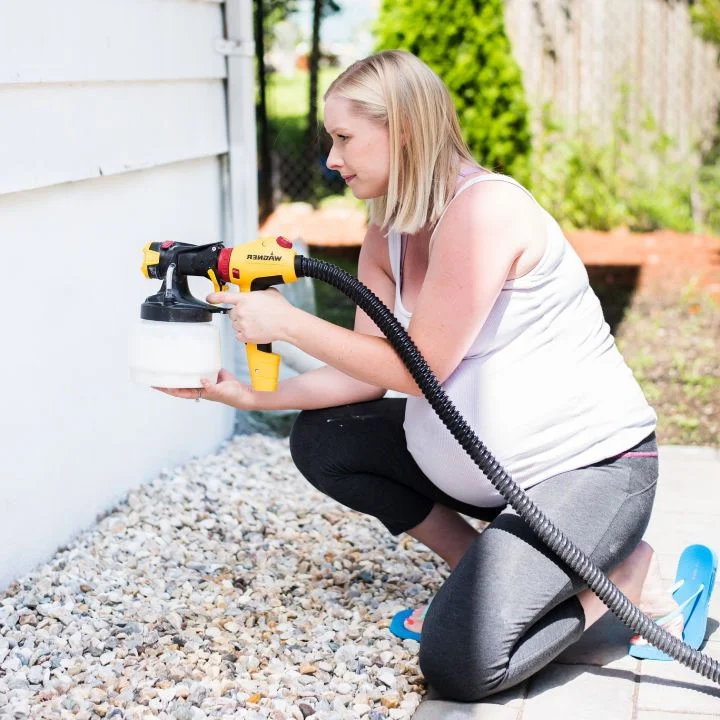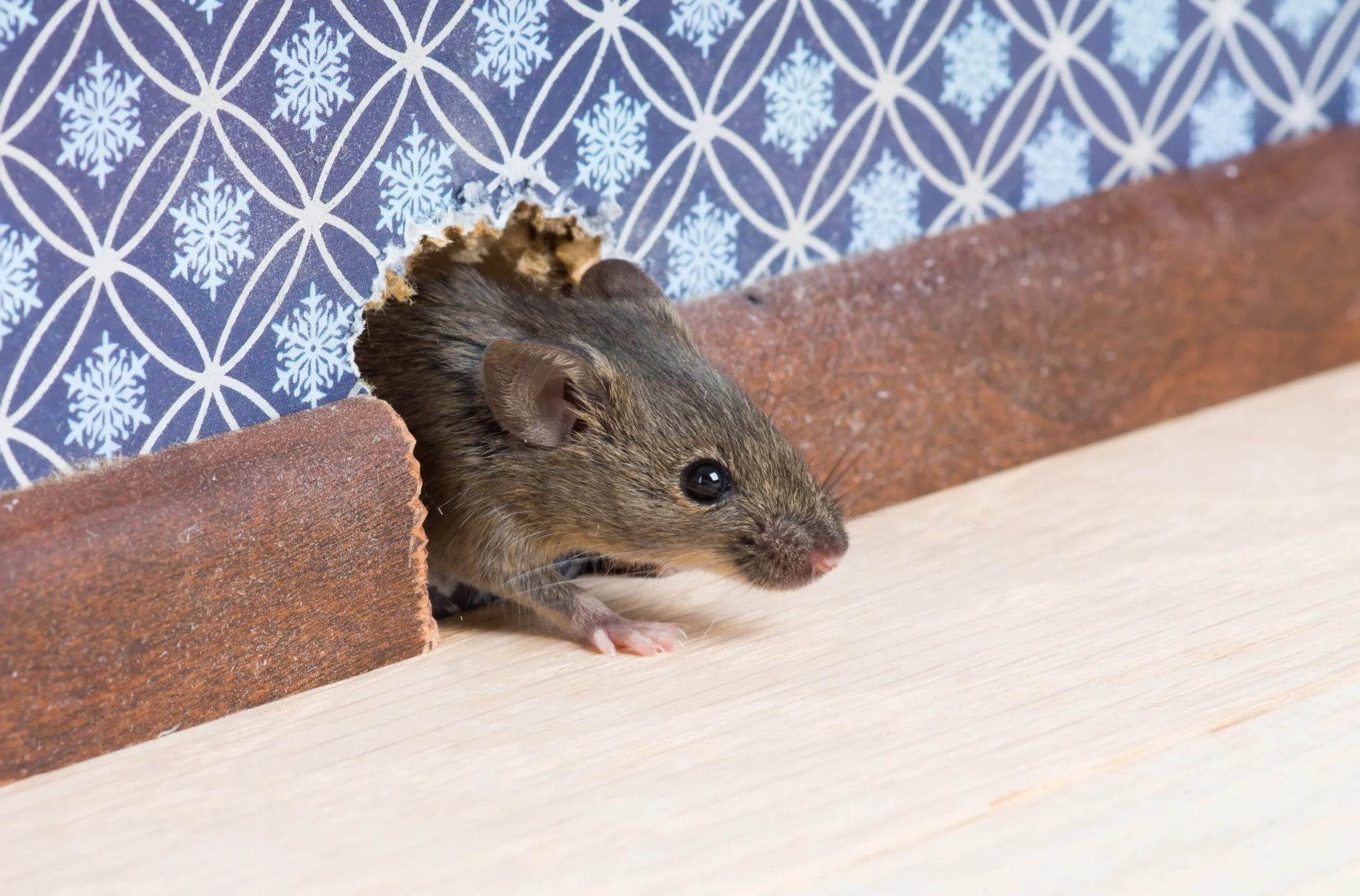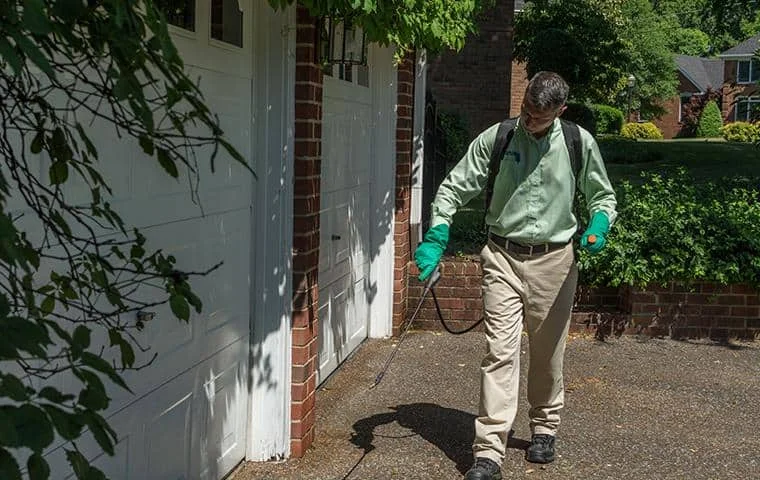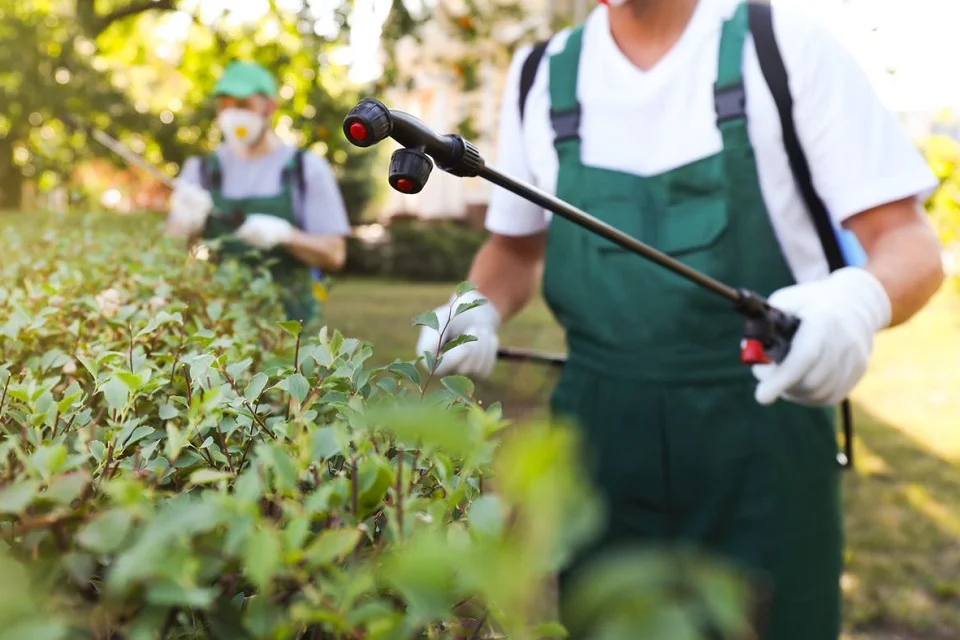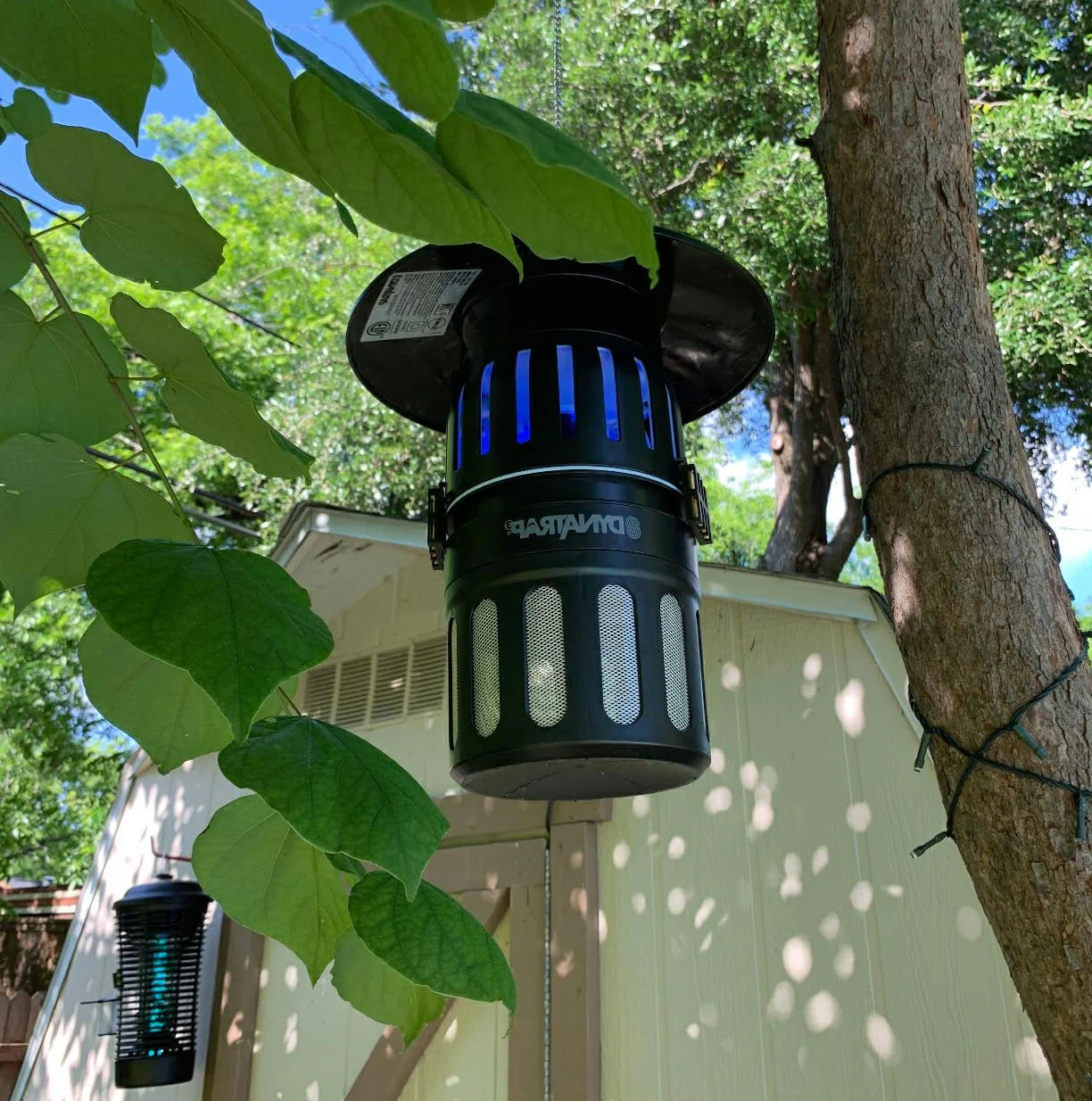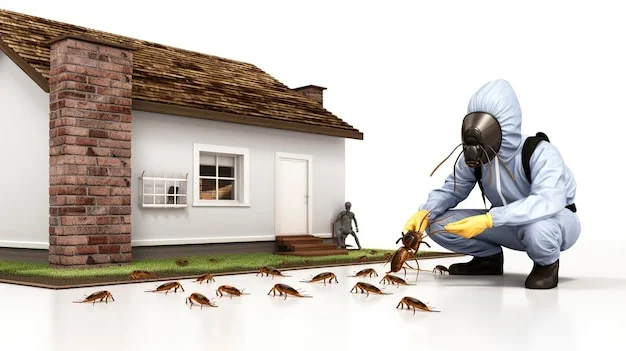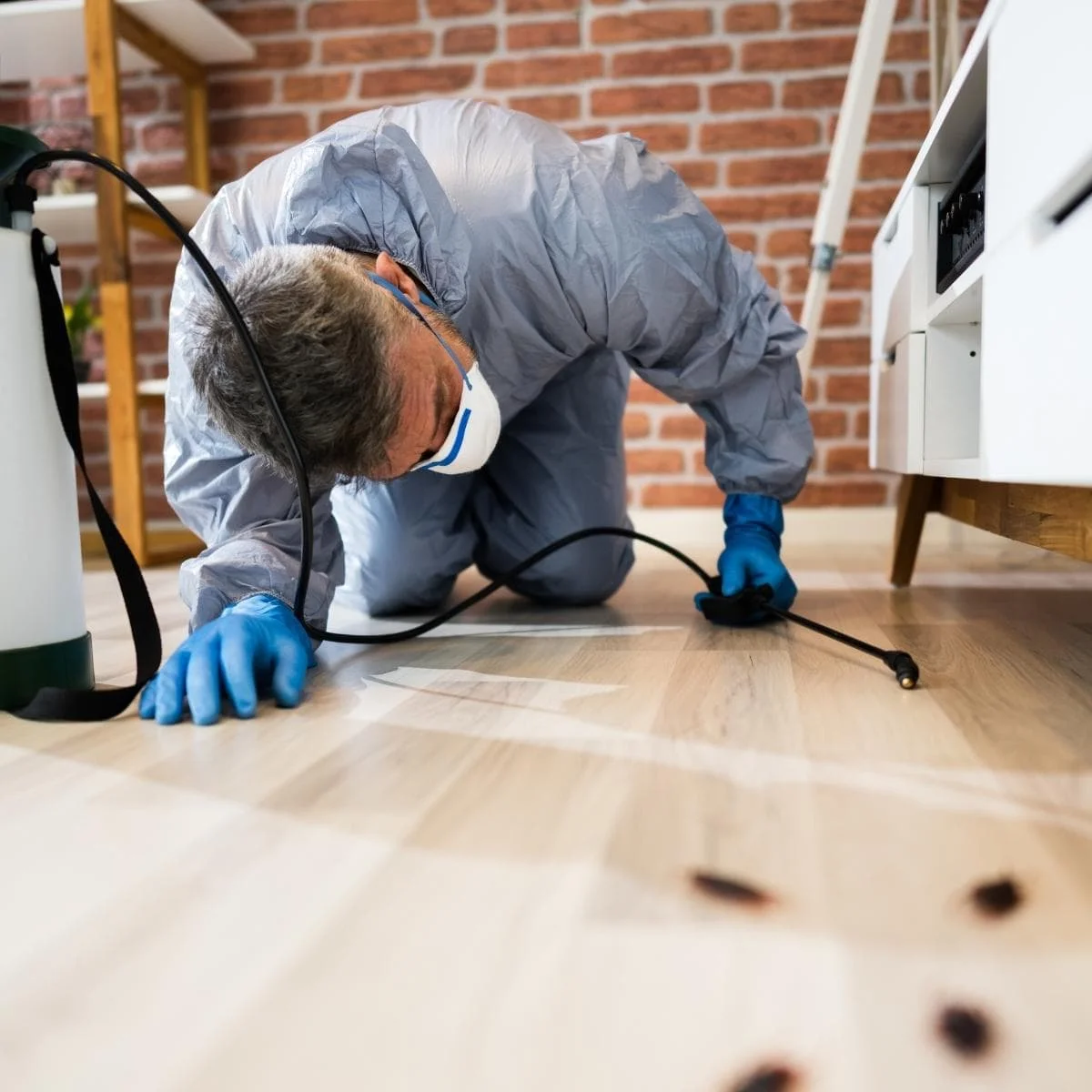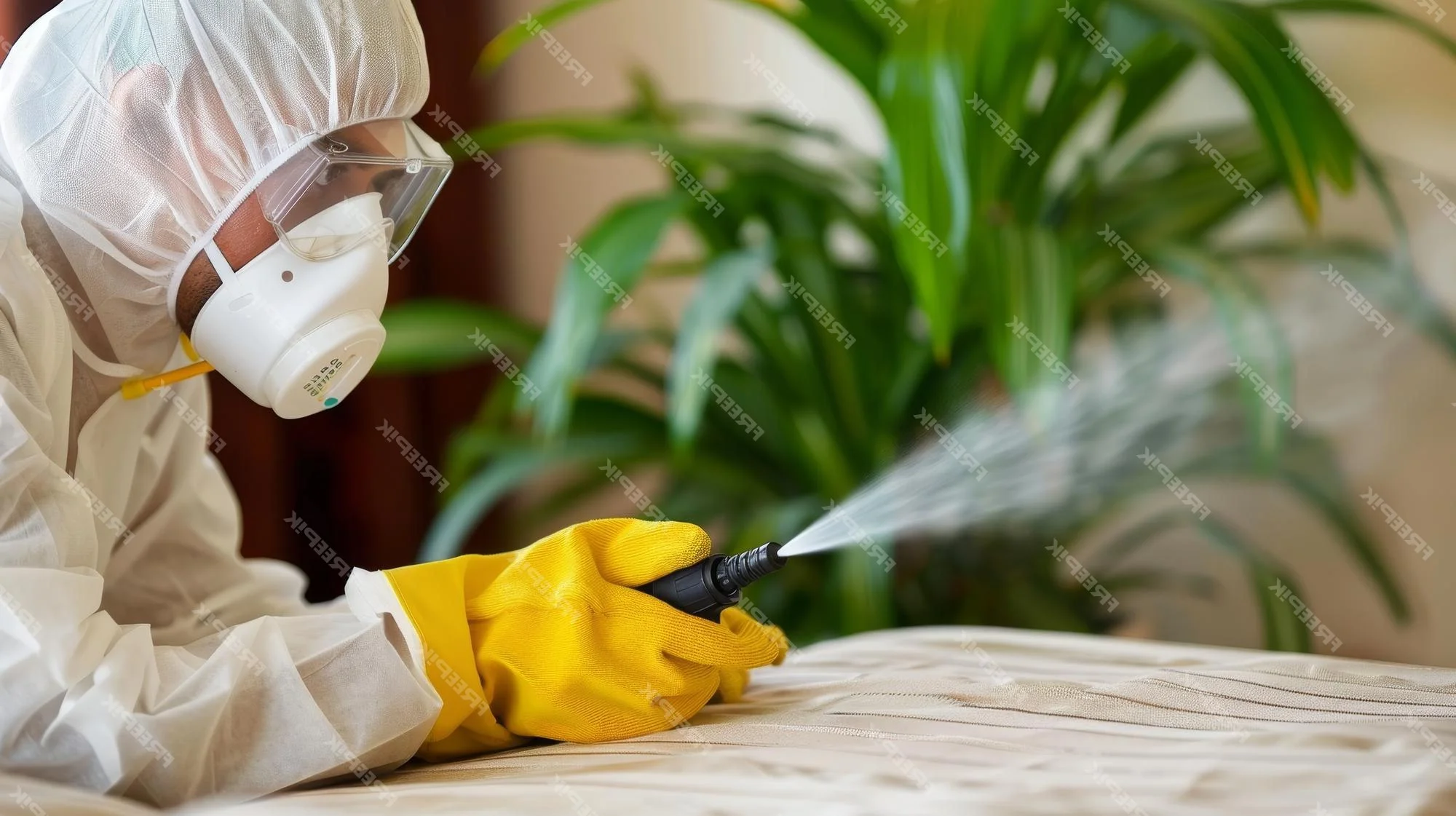From the urban corridors of Baltimore to the coastal communities of the Eastern Shore, Maryland presents distinctive pest challenges shaped by the state's diverse ecosystems, humid climate, and varied architectural landscape. The Old Line State's position in the Mid-Atlantic region—combining urban density with extensive waterways, suburban development, and rural agricultural areas—creates ideal conditions for numerous pest species to thrive year-round. Effective pest control in Maryland requires specialized knowledge of these regional influences and targeted approaches addressing the state's unique pest pressures.
Properties throughout Maryland face ongoing pest challenges that can damage structures, affect health, impact the state's vital tourism and agricultural industries, and diminish quality of life. Whether preventing termite damage in historic Annapolis, managing mosquitoes in waterfront communities, or controlling rodents in Baltimore's urban neighborhoods, local professional exterminators provide essential expertise tailored to Maryland's specific conditions. This guide explores common Maryland pest problems, effective management strategies including eco-friendly pest solutions, and why the Old Line State's diverse environments make professional knowledge particularly valuable for lasting protection.
Dealing with persistent Maryland pests? Our Old Line State specialists offer
emergency pest control
24/7 and comprehensive
property inspections throughout Maryland.
Contact us today for prompt assistance!
Pest Control Challenges Specific to Maryland
Maryland's unique environment creates distinctive pest control challenges that require specialized approaches. Here's why pest management in the Old Line State demands expert attention:
-
Diverse ecosystems Maryland's geography spans urban centers, extensive waterfront areas, rural farmland, and forested regions—all within a relatively compact area. This ecological diversity creates overlapping pest habitats where species typically confined to specific environments can easily migrate between zones, creating complex management challenges requiring comprehensive approaches addressing multiple pest pressures simultaneously.
-
Chesapeake Bay influence The state's extensive waterfront along the Chesapeake Bay and its tributaries creates ideal breeding conditions for mosquitoes and moisture-dependent pests while affecting soil conditions favoring termite activity. Properties in these areas face specialized challenges from both aquatic and terrestrial pest species, requiring tailored management strategies addressing these waterfront-specific pressures.
-
Urban-suburban-rural interface Maryland's development patterns create extensive areas where urban centers transition to suburban neighborhoods and rural zones, establishing prime conditions for pest movement between environments. These interface areas experience unique pressures as development displaces established pest populations while creating new harborage opportunities, particularly for adaptable species like rodents, raccoons, and various insect pests.
-
Historic architecture Maryland's rich architectural heritage includes structures dating from colonial times through various historical periods, particularly in Annapolis, Baltimore, and historic communities statewide. These buildings often incorporate construction methods and materials particularly vulnerable to certain pest species, requiring specialized protection approaches respecting both preservation requirements and effective pest management.
-
Mid-Atlantic climate Maryland's position in the Mid-Atlantic region creates moderate yet distinct seasonal patterns featuring high summer humidity, mild transitional seasons, and relatively moderate winters compared to northern states. This climate sustains year-round pest activity for many species while allowing certain southern pests to establish populations that wouldn't survive in more northern regions, creating pest pressures not seen in neighboring states.
Understanding these Maryland-specific challenges is crucial for effective pest management that protects properties while respecting the state's environmental sensitivities. Professional pest control services develop customized treatment plans addressing these regional factors, providing targeted protection for the Old Line State's distinctive conditions.
Common Pests in Maryland
Maryland's diverse environments support numerous pest species that impact properties differently based on location, architectural style, and surrounding ecology. Here are the most common invaders troubling the Old Line State:
Termites
Professional conducting a termite inspection on a Maryland property
Maryland faces substantial termite pressure throughout the state, with Eastern subterranean termites being the primary species threatening structures. These wood-destroying insects cause millions in property damage annually, particularly in areas with high soil moisture, older construction, and proximity to wooded areas. The state's climate provides nearly ideal conditions for termite colony development, with sufficient moisture levels and moderate temperatures supporting year-round underground activity despite seasonal surface variations.
Professional termite inspection and treatment combines thorough structural evaluation, soil barrier applications, targeted colony elimination systems, and ongoing monitoring to prevent infestation. Maryland's waterfront properties face particular challenges from high water tables creating favorable termite conditions, while historic structures often require specialized approaches addressing their unique architectural features and materials. Early detection through regular professional inspections provides critical protection against these persistent wood-destroying pests before significant structural damage occurs.
Mosquitoes
Mosquito treatment being applied in a Maryland residential yard
Maryland's abundant water resources—from the Chesapeake Bay and its tributaries to countless streams, ponds, and wetland areas—create ideal breeding conditions for numerous mosquito species. These biting pests remain active throughout the warm season, typically emerging in April and remaining active until late October in most regions. Beyond the significant nuisance they create for outdoor activities, Maryland mosquitoes can transmit West Nile virus, Eastern Equine Encephalitis, and other diseases, presenting both comfort and health concerns.
Effective mosquito control combines environmental management to eliminate standing water, larvicide treatments for permanent water features, and targeted adult mosquito applications around landscape structures and outdoor living areas. Professional services create customized treatment schedules providing continuous protection throughout Maryland's extended mosquito season, allowing families to reclaim outdoor spaces for comfortable enjoyment during warm months. Waterfront properties often require specialized approaches addressing their unique environmental conditions and increased mosquito breeding potential.
Stink Bugs
Professional treating entry points for stink bugs on a Maryland property
Maryland has experienced significant challenges from brown marmorated stink bugs since their introduction to the region in the early 2000s. These invasive pests have established substantial populations throughout the state, creating notable nuisance problems as they seek indoor shelter during fall months. While stink bugs don't cause structural damage or reproduce indoors, their tendency to aggregate in large numbers and release unpleasant odors when disturbed makes them particularly troublesome for Maryland homeowners and businesses.
Professional stink bug management focuses on preventative exterior treatments before fall invasion periods, strategic exclusion work sealing potential entry points, and targeted removal of established indoor populations when necessary. Maryland's agricultural areas face additional challenges from crop damage caused by these invasive pests, while residential properties throughout the state experience predictable invasion cycles as temperatures drop each autumn. Early intervention with professional-grade treatments provides significant reduction in indoor populations compared to over-the-counter approaches.
Rodents
Installing rodent exclusion materials on a Maryland home
Maryland properties contend with several rodent species, with particular challenges in urban areas where established populations of Norway rats and house mice create ongoing pressure on structures. Baltimore's historic neighborhoods face significant rat challenges requiring specialized urban management approaches, while suburban communities experience different pressures from house mice and occasionally roof rats in older neighborhoods with mature tree coverage. Rural properties often encounter additional species including deer mice seeking shelter during colder months.
Comprehensive rodent control combines thorough inspection identifying entry points and harborage areas, strategic exclusion work preventing access, targeted trapping or baiting programs eliminating existing populations, and preventative measures addressing attractants and potential future entry routes. Maryland's diverse architectural landscape—from historic row homes to modern suburban developments—requires customized approaches addressing each property's specific vulnerabilities and existing rodent pressure, with particular attention to preventing seasonal invasion behaviors as temperatures drop each fall.
Ticks
Professional applying tick control treatment to a Maryland yard
Maryland consistently ranks among states with highest Lyme disease incidence rates, highlighting the significant tick challenges facing residents and visitors. Several tick species threaten both humans and pets, with blacklegged (deer) ticks, American dog ticks, and lone star ticks being most common. These parasitic arachnids thrive in Maryland's woodland edges, tall grass areas, and landscaping providing adequate humidity and cover, presenting both nuisance and health concerns through their feeding activities and disease transmission potential.
Professional tick control combines property-wide treatments targeting adult ticks and nymphs, landscape management reducing harboring vegetation, and creation of protective barriers between woodland areas and active use spaces. Treatment programs follow Maryland's specific tick activity patterns, with primary services scheduled during spring emergence and continuing through fall activity periods. Properties bordering wooded areas, parks, or natural corridors face particular challenges requiring comprehensive management approaches, while recreational properties benefit from targeted protection of high-use outdoor spaces.
Eco-Friendly Pest Control for Maryland Properties
Maryland's treasured natural resources—from the Chesapeake Bay watershed to forested western regions and sensitive coastal ecosystems—create strong demand for environmentally responsible pest management approaches. Modern eco-friendly pest solutions protect homes and businesses while minimizing environmental impact through targeted application methods, reduced-risk product selections, and integrated management strategies addressing root causes rather than symptoms alone.
Professional services implement Integrated Pest Management (IPM) principles prioritizing inspection, exclusion, habitat modification, and biological controls when possible, reserving targeted product applications as a final component within comprehensive management programs. This sustainable methodology particularly benefits properties near Maryland's sensitive waterways, wildlife habitats, and agricultural areas while providing effective protection aligned with the state's strong environmental conservation values.
Environmental Commitment
Maryland pest control specialists understand the importance of protecting the state's water resources and sensitive ecosystems, implementing management approaches that effectively address pest issues while preserving the Old Line State's environmental integrity and recreational spaces.
Below is a comparison of different eco-friendly pest control methods highlighting their benefits for Maryland properties:
| Treatment Method |
Benefits |
Ideal Use in Maryland |
| Targeted Application Methods |
Places minimal product amounts only where pests travel, harbor, or enter structures, dramatically reducing overall chemical use while maintaining effectiveness.
|
Properties near Maryland's waterways, including Chesapeake Bay tributaries and coastal areas; homes with wells or other sensitive water considerations; and locations adjacent to protected natural areas where watershed protection is essential.
|
| Exclusion Techniques |
Creates physical barriers preventing pest entry without any chemical use, providing long-term protection with zero environmental impact or ongoing maintenance requirements.
|
Rodent prevention in urban Baltimore properties; sealing against stink bug entry before fall invasion periods; and protecting historic structures against pest entry while preserving architectural integrity—particularly important in Maryland's many designated historic districts.
|
| Habitat Modification |
Addresses environmental conditions supporting pest populations through landscape adjustments, moisture management, and harborage reduction without requiring product applications.
|
Mosquito prevention in waterfront properties; tick management in recreational areas; termite prevention through moisture control; and modification of landscape features encouraging rodent activity near structures—particularly important in Maryland's humid climate where moisture management provides multiple pest prevention benefits.
|
| Biological Controls |
Utilizes natural predators, beneficial nematodes, or microbial agents to manage pest populations in environmentally sensitive ways with minimal impact on non-target organisms.
|
Garden pest management in environmentally conscious communities; mosquito control in sensitive watershed areas; and agricultural property protection where beneficial insect preservation supports both pest management and crop pollination goals.
|
| Reduced-Risk Products |
Employs newer generation materials designed specifically for lower environmental impact with faster environmental breakdown and reduced non-target effects.
|
Properties within the Chesapeake Bay Critical Area; homes with children, pets or specific health considerations; and locations where traditional products may affect beneficial species including pollinators and aquatic organisms important to Maryland's ecosystem health.
|
Specialized Pest Control Services in Maryland
Comprehensive Mosquito Management
Maryland's extensive waterways and humid climate create ideal conditions for substantial mosquito populations throughout the warm season. Our specialized mosquito control programs provide comprehensive protection through environmentally responsible approaches addressing both immediate nuisance relief and long-term population management.
Treatment protocols combine thorough property assessment identifying breeding sites and harborage areas, targeted larvicide applications for permanent water features, adult mosquito treatments focused on resting locations, and ongoing maintenance ensuring continuous protection throughout Maryland's extended mosquito season. For waterfront properties, expanded management zones and specialized treatment approaches address the increased breeding potential these locations face, while suburban and urban properties receive customized protection based on their specific landscape features and surrounding environment. Educational components help property owners understand mosquito breeding prevention, providing additional protection through improved landscape management and water feature maintenance.
Stink Bug Prevention
Maryland properties face significant challenges from brown marmorated stink bugs, with predictable fall invasion cycles creating substantial nuisance concerns. Our specialized stink bug prevention programs focus on proactive protection before these seasonal invasions begin, creating defensive barriers addressing these persistent pests before they establish indoor populations.
Service approaches combine preventative exterior treatments targeting congregation areas where stink bugs collect before attempting entry, comprehensive exclusion work sealing potential access points, and as-needed interior services addressing established populations. Programs utilize Maryland-specific timing based on regional temperature patterns and stink bug activity cycles, with treatments scheduled several weeks before typical invasion periods for maximum effectiveness. This specialized service provides significant reduction in indoor stink bug populations compared to reactive approaches or over-the-counter methods, allowing Maryland families to avoid the substantial nuisance these invasive pests create when entering homes in large numbers each fall.
Residential & Commercial Pest Control Throughout Maryland
Residential Pest Protection
Maryland homes face diverse pest challenges influenced by location, architectural style, and surrounding environment. Residential pest protection programs address these varied needs with customized approaches for different property types, from historic Annapolis homes and Baltimore row houses to suburban developments and waterfront properties throughout the state.
Professional services offer comprehensive protection against Maryland's most common household pests, with particular emphasis on preventing termite damage, managing mosquitoes and ticks in outdoor areas, controlling rodent populations in urban and suburban settings, and addressing seasonal invaders including stink bugs and various overwintering pests. Treatment schedules align with Maryland's seasonal pest activity cycles, providing targeted intervention during key pressure periods while maintaining consistent protection throughout the year.
Commercial Pest Control
From Baltimore's restaurants and hotels to healthcare facilities throughout the state, food production operations, retail establishments, and office complexes, Maryland businesses require specialized pest management programs that protect operations, reputation, and regulatory compliance. Commercial pest control services address distinct industry challenges with targeted protocols designed for each business category.
Professional commercial services provide comprehensive documentation supporting audit requirements, discreet service scheduling minimizing operational disruption, and emergency response capabilities for time-sensitive situations. Maryland's vital hospitality and food service industry particularly benefits from effective pest management protecting customer experiences and regulatory standing, while healthcare facilities receive specialized protocols addressing their unique sensitivity requirements and operational standards.
From residential pest protection plans to customized
commercial pest control solutions, we have properties throughout Maryland covered –
schedule your service now and keep your
property pest-free year-round!
Why Choose Local Experts in Maryland?
When it comes to protecting your Maryland property from pests, working with local experts offers distinct advantages. A local pest control company understands the region's specific challenges and truly cares about the communities they serve. Here's why choosing local Maryland specialists makes a significant difference:
-
Knowledge of regional pest patterns Local technicians understand how Maryland's diverse regions—from urban Baltimore to suburban communities, Eastern Shore waterfront areas, and western mountains—experience different pest pressures and seasonal cycles. This regional expertise allows for precisely targeted treatments and timing based on local experience rather than generic approaches used by national companies unfamiliar with Old Line State specifics.
-
Experience with Maryland architecture Local experts are familiar with the state's distinctive architectural styles and construction methods—from historic properties in Annapolis and Baltimore to traditional suburban developments and waterfront homes. This specialized knowledge helps identify vulnerable areas and implement effective protection strategies specifically suited to each property type.
-
Understanding of watershed protections Maryland's position within the Chesapeake Bay watershed creates specific regulatory considerations and environmental sensitivities affecting pest management approaches. Local professionals understand these requirements intimately, implementing effective treatment strategies that remain fully compliant with state and local watershed protection ordinances.
-
Familiarity with local regulations Maryland maintains specific regulations regarding pesticide applications, historic district requirements, and coastal zone management. Local pest professionals navigate these requirements daily, ensuring all services remain fully compliant while effectively addressing pest concerns throughout the state's different jurisdictional areas.
-
Responsive service availability Local Maryland companies maintain service capabilities throughout the state's diverse regions, providing responsive assistance regardless of property location. This local availability ensures that when emergency situations arise, professional help remains readily accessible rather than requiring extended travel from distant service centers.
By choosing local professional exterminators with deep knowledge of Maryland's specific pest challenges, property owners receive more effective, regionally-appropriate solutions than generic approaches used by those unfamiliar with the Old Line State's unique conditions and environmental sensitivities.
Regional Pest Control Services Throughout Maryland
Different regions of Maryland face unique pest challenges based on geography, development patterns, and environmental features. Professional pest control specialists understand these regional differences:
Baltimore Metropolitan Area
Including: Baltimore City, Towson, Columbia, Ellicott City, Catonsville, Glen Burnie
Maryland's largest urban area experiences distinctive pest challenges influenced by population density, historic architecture, and established infrastructure. Baltimore's older neighborhoods contend with significant rodent pressure requiring specialized urban management approaches, while the region's diverse housing stock—from historic row homes to modern suburban developments—creates varied structural vulnerabilities. Commercial properties throughout the metropolitan area face ongoing protection needs supporting operational continuity and customer experience quality. The region's position along the Patapsco River and harbor areas creates moisture-related pest pressures in waterfront zones, while extensive parklands and green spaces harbor tick populations and provide corridors for wildlife pests entering developed areas.
Washington DC Suburbs
Including: Silver Spring, Rockville, Bethesda, Gaithersburg, Germantown, Frederick
Maryland's Washington DC suburban corridor combines high population density with extensive development creating significant pest management needs for both residential and commercial properties. The region's rapid growth has created substantial urban-rural interface zones where development displaces established pest populations while creating new harborage opportunities. These communities experience substantial termite pressure due to favorable soil conditions and housing density, while stink bug invasions create predictable seasonal challenges throughout the area. The region's extensive stream network and storm water management systems support mosquito breeding, while mature tree canopy in established neighborhoods harbors various arboreal pest species including carpenter ants and certain stinging insects.
Eastern Shore
Including: Easton, Cambridge, Salisbury, Ocean City, Chestertown, Berlin
Maryland's Eastern Shore combines agricultural areas with waterfront communities and tourist destinations creating diverse pest management needs. The region's extensive shorelines along the Chesapeake Bay and Atlantic Ocean support significant mosquito populations requiring comprehensive management approaches for comfortable outdoor enjoyment. Agricultural areas experience specialized pest pressures where crop production interfaces with residential zones, while seasonal tourist communities face fluctuating protection needs based on occupancy patterns. The shore's sandy soils create favorable conditions for certain termite species, while historic properties in communities like Chestertown require specialized approaches preserving architectural integrity while providing effective protection. The region's significantly milder coastal climate compared to inland areas creates extended seasonal activity for many pest species.
Western Maryland
Including: Hagerstown, Cumberland, Frostburg, Oakland, Frederick, Westminster
Western Maryland's mountainous terrain and rural character create specialized pest management needs distinct from more developed eastern regions. The area's extensive forest coverage harbors carpenter ants, various wood-boring insects, and significant tick populations requiring comprehensive management in residential areas bordering woodland environments. Agricultural properties face specialized challenges where production activities attract certain pest species while creating potential harborage areas. The region's higher elevations experience slightly different seasonal pest cycles compared to lower-elevation areas, while recreational properties require specialized service approaches addressing both peak-season protection needs and off-season preventative programs. While certain pest pressures may be reduced compared to coastal areas, the region's cooler climate creates pronounced seasonal invasion cycles as fall temperatures trigger accelerated pest movement toward indoor shelter.
Top Cities for Pest Control in Maryland
Professional pest control services are available throughout the Old Line State. Below are some of the major Maryland cities where quality pest management is especially important:
Baltimore
As Maryland's largest city, Baltimore presents diverse pest management challenges across its varied neighborhoods and architectural landscape. The city's historic districts feature row homes and commercial buildings requiring specialized protection approaches respecting both preservation requirements and effective pest management. Baltimore's density creates significant rodent pressure, particularly in older neighborhoods where established infrastructure and building design provide ideal harborage conditions. The waterfront areas along the Inner Harbor and surrounding zones face moisture-related pest issues while supporting mosquito breeding in standing water areas. Commercial facilities throughout the city require comprehensive protection supporting both operational continuity and customer experience quality, particularly in the vital food service and hospitality sectors. Baltimore's position as a major port creates occasional introduction risks for new invasive species, while the surrounding suburban communities experience transition pressures where development interfaces with established pest populations. Comprehensive pest management in this dynamic urban environment requires specialized approaches addressing the city's diverse architectural characteristics and extensive environmental influences.
Silver Spring
As a major suburban hub within the Washington DC metropolitan area, Silver Spring presents unique pest management challenges shaped by its dense development patterns, diverse commercial centers, and varied residential neighborhoods. The area experiences substantial termite pressure due to favorable soil conditions and housing density, while stink bug invasions create predictable seasonal challenges particularly in fall months. Silver Spring's extensive green space network—including Sligo Creek Park and other natural corridors—harbors tick populations and provides routes for wildlife pests entering residential zones. The community's diverse architectural landscape ranges from established neighborhoods with mature trees supporting carpenter ant activity to newer mixed-use developments facing different pest vulnerabilities. Commercial properties throughout Silver Spring require comprehensive protection supporting business operations and customer experience, particularly in the area's vital retail and restaurant sectors. The region's position within the Rock Creek watershed creates drainage patterns supporting mosquito breeding in certain areas, while storm water management features require regular monitoring to prevent becoming mosquito production sites. Effective pest management in Silver Spring addresses these suburban challenges through targeted approaches respecting both environmental sensitivities and residential quality of life considerations.
Annapolis
As Maryland's historic capital city, Annapolis combines architectural heritage, waterfront positioning, and tourism focus creating specialized pest management needs. The city's historic district features centuries-old buildings requiring protection approaches balancing preservation requirements with effective pest management, particularly for termite prevention in irreplaceable colonial-era structures. Annapolis' position along the Severn River and Chesapeake Bay creates substantial mosquito pressure during warm months, while the maritime environment affects soil conditions favoring termite activity throughout the area. The city's role as a tourism destination means hospitality properties require comprehensive protection supporting visitor experiences, while the boating industry faces specialized challenges from pests affecting marine equipment and storage facilities. Residential properties throughout Annapolis experience varied pest pressures based on proximity to water, construction type, and surrounding landscape features. The city's numerous historic trees provide harborage for carpenter ants and various wood-destroying insects that frequently target nearby structures, requiring vigilant management programs protecting both the urban forest and built environment. Comprehensive pest management in Annapolis requires specialized approaches addressing the capital city's unique combination of historical significance, tourism prominence, and waterfront ecology.
Ocean City
As Maryland's premier Atlantic Coast resort destination, Ocean City faces distinctive pest management challenges influenced by its coastal environment, dramatic seasonal population fluctuations, and unique architectural landscape. The community's beachfront positioning creates substantial mosquito and biting fly pressure requiring comprehensive management for comfortable outdoor enjoyment during tourist season. Ocean City's seasonal occupancy patterns in many properties create specialized pest vulnerabilities during vacant periods, requiring monitoring approaches addressing potential problems before property owners return. The resort's hospitality focus means hotels, restaurants, and vacation rentals require rigorous protection programs supporting both guest experiences and operational requirements, while the boardwalk area faces unique pressures from food service activities and high pedestrian traffic. Ocean City's coastal construction often incorporates elevated foundations and specialized building methods creating distinctive pest entry points and harborage opportunities different from inland structures. The community's position between the Atlantic Ocean and coastal bays creates saltwater influences affecting certain pest behaviors and treatment considerations. Comprehensive pest management in Ocean City addresses these coastal resort challenges through specialized approaches respecting both the tourism economy and sensitive environmental considerations of Maryland's barrier island ecosystem.
Maryland Service Coverage Map
Seasonal Pest Guide for Maryland
Spring (March-May)
- Termite swarms emerge
- Ants become increasingly active
- Tick activity increases significantly
- Mosquito breeding begins
Recommendation: Schedule annual termite inspection, implement tick prevention before outdoor activity increases, and address emerging ant issues before colonies expand.
Summer (June-August)
- Mosquito activity peaks
- Tick populations remain highly active
- Ant colonies reach maximum size
- Stinging insect nests develop fully
Recommendation: Maintain mosquito and tick management for outdoor areas, monitor for carpenter ant activity in structures, and address stinging insect nests before they reach peak population.
Fall (September-November)
- Stink bugs seek indoor shelter
- Rodents begin moving indoors
- Spiders become more visible
- Various overwintering insects appear
Recommendation: Apply preventative treatments for stink bugs before invasion periods, implement rodent exclusion measures, and seal entry points against fall invaders seeking winter shelter.
Winter (December-February)
- Indoor rodent activity increases
- Overwintering pests emerge during warm periods
- Indoor pest issues become more noticeable
- Termites remain active below ground
Recommendation: Focus on interior pest management for rodents and overwintering invaders, while maintaining termite protection as underground colonies remain active despite surface conditions.
Maryland's moderate mid-Atlantic climate creates distinct but manageable seasonal pest cycles requiring regionally-appropriate timing for effective management. Professional pest control services adjust their strategies throughout the year to address these predictable patterns, providing targeted protection during key activity periods while maintaining consistent prevention during quieter cycles.
What Our Maryland Clients Say
"After struggling with stink bugs invading our Rockville home every fall, their preventative treatment program has completely transformed our experience. We went from vacuuming dozens daily to seeing almost none this season—worth every penny for that peace of mind."
- Jennifer M., Rockville
★★★★★
"Living along the Chesapeake Bay meant mosquitoes made our backyard unusable most summer evenings. Their comprehensive management program has reclaimed our outdoor spaces. We can finally enjoy sunset gatherings on our deck without the constant swatting and discomfort."
- Robert L., Annapolis
★★★★★
"As a restaurant owner in Baltimore's historic Fells Point, reliable pest prevention isn't optional—it's essential for our reputation. Their commercial program provides consistent protection with discreet service that never disrupts our guests, while their documentation makes health inspections completely stress-free."
- Michael S., Baltimore
★★★★★
Frequently Asked Questions
How can Maryland homeowners effectively prevent stink bug invasions?
Effective stink bug prevention for Maryland properties requires a multi-faceted approach addressing these persistent seasonal invaders: First, preventative exterior treatments should be applied several weeks before typical invasion periods, creating protective barriers on surfaces where stink bugs congregate before attempting entry. Timing is critical, with applications ideally completed by mid-September before cooling temperatures trigger movement toward structures. Second, comprehensive exclusion work should seal potential entry points focusing on areas around windows, doors, utility penetrations, and roof-wall junctions where even small gaps provide access. Pay particular attention to upper story access points, as stink bugs frequently target higher elevations when seeking entry. Third, light management strategies should reduce exterior illumination attracting stink bugs during evening hours, particularly during peak invasion seasons when overnight temperature drops accelerate movement. Fourth, landscape modifications can reduce attractiveness to these invasive pests, including trimming vegetation away from structures and managing seed-producing plants that provide food sources. Fifth, interior vacuum removal of visible insects provides immediate control without creating the defensive odor released when bugs are crushed, while proper vacuum contents disposal prevents reinfestation. Our stink bug prevention programs incorporate all these elements plus specialized product selection maximizing residual protection through fall weather conditions, providing significant reduction in indoor populations compared to reactive approaches or over-the-counter methods.
What makes tick control particularly important in Maryland properties?
Tick control holds special importance for Maryland properties due to several critical factors: First, Maryland consistently ranks among states with highest Lyme disease incidence rates, with some counties reporting exceptionally high transmission levels creating significant health concerns for residents and visitors. This elevated disease risk affects property enjoyment and outdoor activity comfort throughout much of the state. Second, Maryland's diverse ecosystems support multiple tick species of medical concern—including blacklegged (deer) ticks transmitting Lyme disease, American dog ticks associated with Rocky Mountain spotted fever, and lone star ticks linked to emerging diseases including alpha-gal meat allergy. This species diversity creates year-round management challenges as different ticks emerge during various seasonal periods. Third, Maryland's extensive wooded areas interfacing with residential and recreational zones create ideal conditions for tick proliferation, particularly in expanding suburban developments where habitat fragmentation concentrates wildlife hosts in remaining green spaces. Fourth, the state's moderate climate allows extended tick activity periods compared to more northern regions, with activity possible during winter warm spells creating nearly year-round exposure potential in some areas. Fifth, Maryland's outdoor recreation focus—from extensive state parks to backyard activities—increases human-tick encounter opportunities requiring comprehensive protection strategies for comfortable environmental enjoyment. Our tick management programs address these Maryland-specific challenges through property-wide treatments targeting primary tick habitation zones, creation of protective barriers between tick harboring areas and active use spaces, and strategic timing aligned with the state's extended tick seasons.
How should Maryland property owners on the Chesapeake Bay prepare for mosquito season?
Maryland's Chesapeake Bay properties require specialized mosquito preparation strategies addressing their unique waterfront conditions: First, comprehensive property assessment should identify both obvious and hidden breeding sites, including not only standing water in containers, landscape features and boat equipment, but also tidal areas where certain salt-tolerant mosquito species breed in brackish environments uniquely present in Bay properties. Second, proactive habitat management should address permanent water features through biological control methods appropriate for sensitive watershed areas, including mosquito-eating fish in appropriate settings and bacterial larvicides designed for aquatic ecosystem safety. Third, landscape modification strategies create less favorable mosquito conditions while maintaining shoreline integrity, including proper grading for drainage, management of dense vegetation providing harborage, and strategic plant selection reducing mosquito-friendly microclimates. Fourth, structural protection improvements minimize indoor exposure, including properly maintained screening, door sweeps, and strategic use of air curtains for high-traffic entries. Fifth, professional treatment programs should begin before mosquito populations establish, typically in April for most Bay areas, with customized approaches respecting both environmental sensitivity and maximum effectiveness in challenging maritime conditions. Our Chesapeake Bay mosquito programs incorporate these waterfront-specific strategies plus integrated service scheduling maintaining protection throughout Maryland's extended mosquito season, allowing property owners to enjoy outdoor waterfront living without the constant nuisance and potential health concerns these biting pests otherwise create.
What specialized pest concerns should historic Maryland properties address?
Historic Maryland properties face distinctive pest management considerations requiring specialized approaches protecting both structural integrity and irreplaceable architectural features: First, comprehensive inspection protocols must address period-specific construction elements often absent in modern buildings, including post-and-beam framework, balloon framing, crawlspaces, unfinished attics, and various foundation types each creating unique pest vulnerabilities requiring targeted examination. Second, termite management requires specialized approaches addressing both prevention and treatment in historic structures, with particular attention to non-invasive monitoring systems, targeted soil treatments respecting historic landscapes, and wood treatment methods compatible with period materials. Third, rodent exclusion strategies must balance integrity protection with preservation requirements, utilizing materials and installation methods appropriate for historic features while preventing damage from gnawing activity that can compromise centuries-old components. Fourth, moisture management recommendations address unique challenges in historic structures, where modern waterproofing is often absent and traditional materials interact differently with environmental conditions affecting both structural integrity and pest attractiveness. Fifth, treatment protocol selection must consider both effectiveness and compatibility with historic materials, avoiding approaches potentially damaging to sensitive components while providing necessary protection against destructive pest activity. Our historic property programs incorporate all these specialized considerations plus documentation supporting preservation requirements, providing effective protection while respecting the architectural and historical significance of Maryland's treasured historic structures from colonial-era Annapolis buildings to Victorian Baltimore row homes and rural historic properties throughout the state.
Pests don't stand a chance with the right team on your side. Trust
PestControl100 for dependable pest control in Maryland –
contact us today and reclaim your spaces from the Old Line State's most persistent pests!



